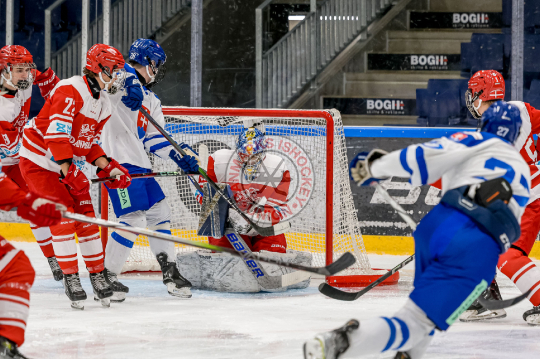Jason Moran performed at the Jazzhus Montmarte for the first time ever last week on Wednesday. The intimate setting of the historic cafe, which re-opened in 2010, suited him well — a classic club with a modern touch — and he delivered a stunning performance.
Playing with The Bandwagon, his band of over 11 years, consisting of bassist Tarus Mateen and drummer Nasheet Waits, Moran began the evening with ‘Ringing My Phone’, the musical mimicking of a young Turkish woman’s mobile phone conversation. The piece still causes audiences to pause and wonder what in the world is going on, before he pulls them in by showing that there’s music behind a human voice. He then seamlessly merged the piece into ‘Blue Blocks’, a riveting number that well displays his virtuosity of the keyboard and the subliminal communication he and his band have formed.
After this, Moran unveiled a number previously un-played by the band in Copenhagen. It began in the middle of the chorus of Gladys Knight and the Pip’s soul classic, ‘No One Can Love You More Baby’, and played for nearly a whole minute without a note or a beat played by Moran and his band. This recording went on for just long enough to create tension in the audience, before Moran, Mateen and Waits subtly joined the piece, eventually entering the song and becoming the rhythm section for it, entwining themselves so thoroughly that Knight, the Pips and the Bandwagon were seemingly playing as one. Within this piece, the band wove in threads of ‘Body and Soul’ and ‘My Funny Valentine’ before finally ending the song as softly as a feather landing on the stage.
Moran then flirted with some stride piano from Fats Waller, something that he and the artist Meshell Ndegeocello have fused into a rousing performance — reminding the audience that ‘it’s important to dance to music, not just sit to it.’ Moran performed a song, ‘Yojimba’ from an Akira Kurosawa film that morphed into Horace Silver’s ‘Song for My Father’ before rounding out in Moran’s 2006 song ‘Milestone’ that in its recorded version prominently features his wife, the successful soprano Alicia Hall Moran. Here, the lack of her voice made the tune, a wife’s longing for her jazz-touring husband, all the more resonate.
Finally, Moran concluded the evening by focusing on the great Thelonious Monk, the artist who turned him on to jazz when he was a boy. The three songs he played included the infusion of an enchanting recording of Monk tap-dancing, a few classic Monk pieces, and finally, for an encore, a piece that concluded with Monk chanting almost mantra like: “Life. Live. Time.”
About the only thing lacking was a packed house. It’s oft-incited in jazz circles to “keep jazz alive.” But when one of the most innovative and accomplished young artists within his genre, let-alone music, fails to attract a packed house, one wonders if jazz is doomed to occupy a niche in an increasingly more superficial musical spectrum. One could argue that the price of admission, 400 kr., could have kept a large audience away, but the truth is, Moran, while selling out concert halls and jazz clubs in the U.S. and abroad, has never attracted a huge following in Copenhagen. Could it be that he’ll be revered in retrospect — celebrated when he’s gray-haired playing as a legend at the Copenhagen Jazz Festival?
Copenhagen claims to be, aspires to be, and has a history of being a great jazz city. But if a city were to ignore an exhibition of Van Gogh, forgo a concerto by Stravinsky, or walk past blithely as Anna Pavlova performed, an art lover should lament the missed opportunity of a great city, and hope it’ll only be more attentive the next time genius comes around.












